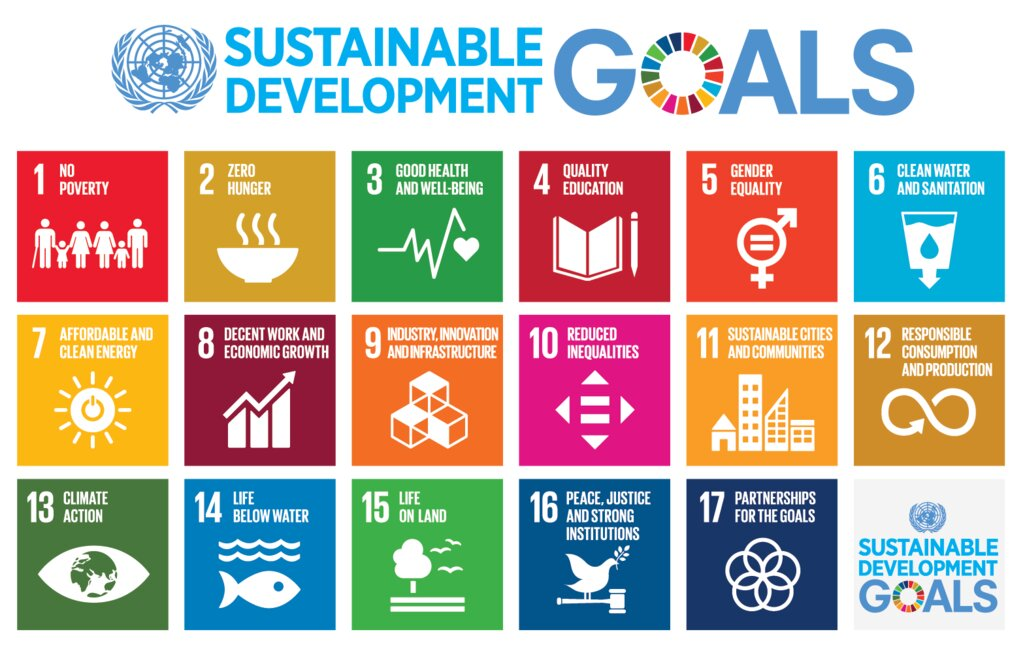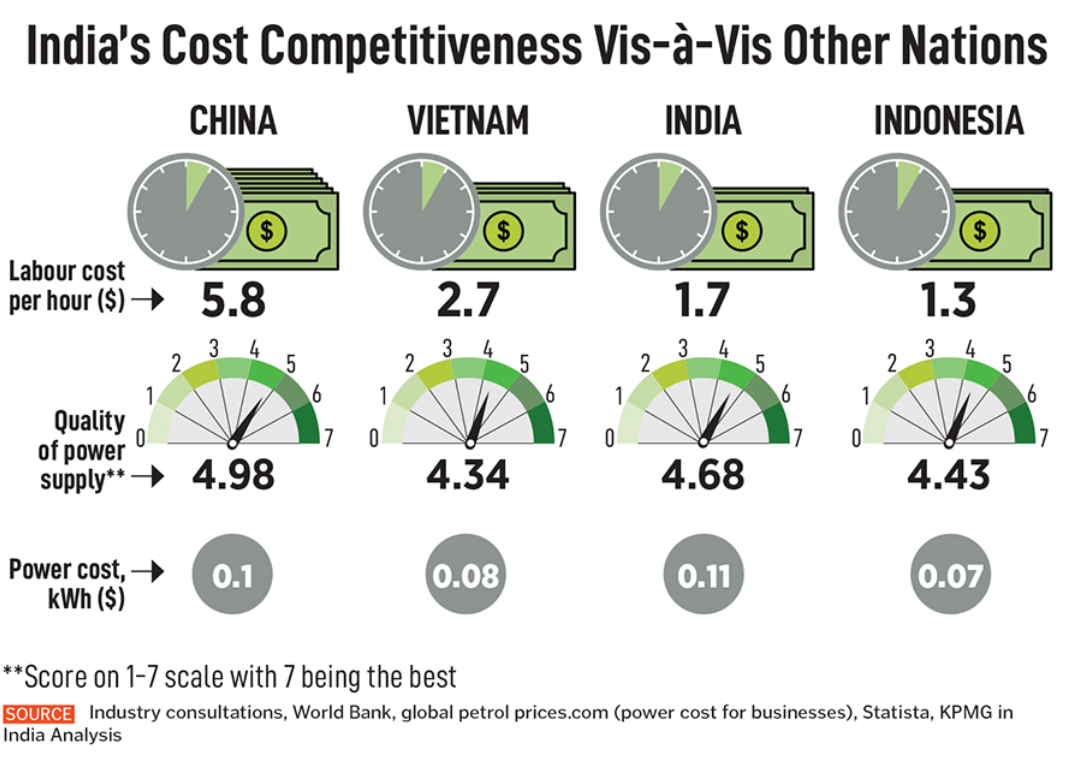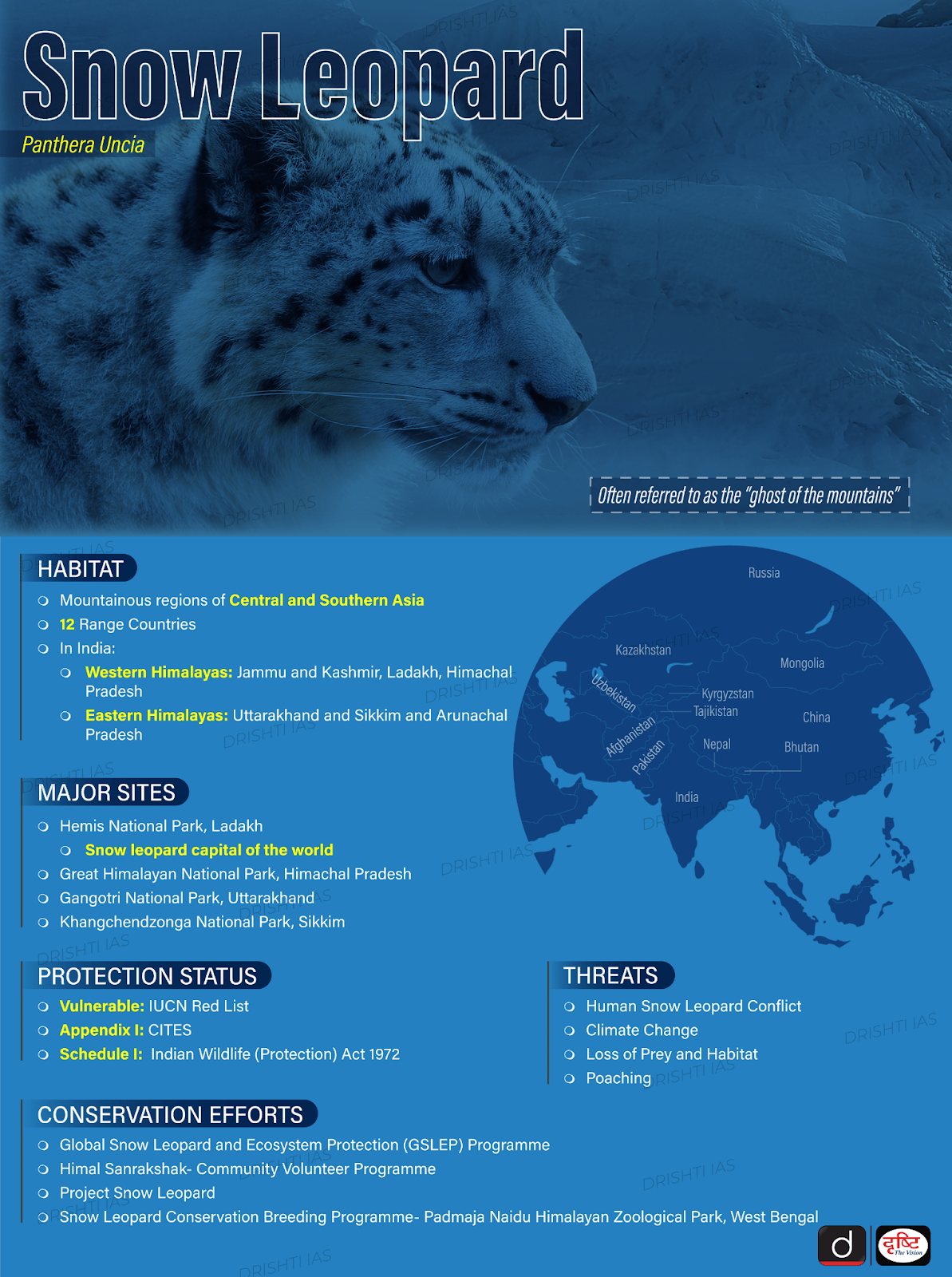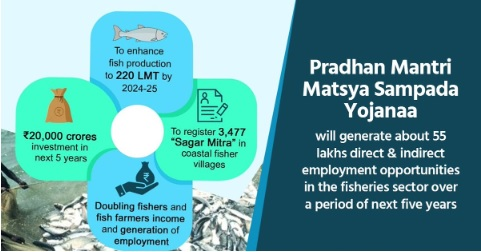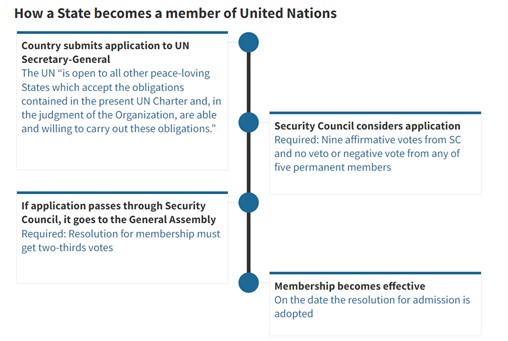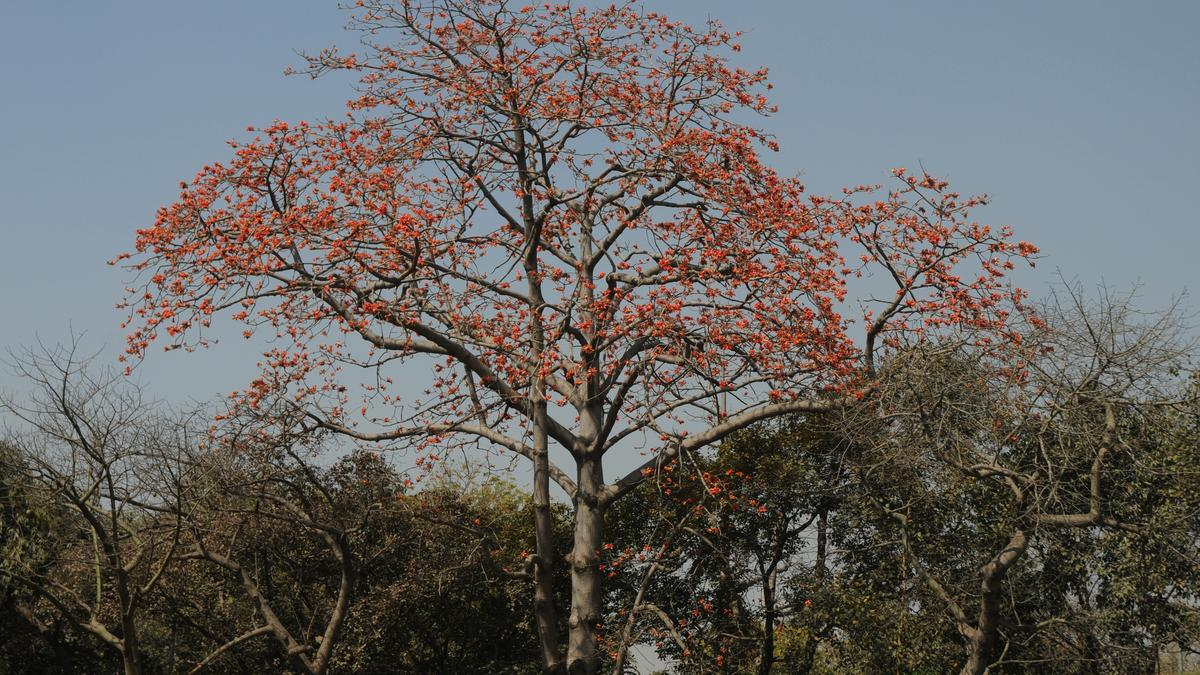Ethics
Criminalisation of Politics
For Prelims: Criminalisation of Politics, Internal democratic structures,, Corruption, RP Act 1951, National Women's Commission, National Human Rights Commission (NHRC), Law Commission
For Mains: Criminalisation of Politics, its causes and key issues involved.
Why in News?
Recent cases of alleged sexual harassment of women on the various MP, MLA and government employees, sheds light on a concerning aspect of criminalisation of politics and the ethical issues involved like moral responsibility, failure to uphold professional ethics etc.
What does the Criminalisation of Politics Mean?
- About:
- Criminalisation of politics is when people with criminal charges or backgrounds become politicians and are elected to office.
- It can affect the basic principles of democracy, such as fairness in elections, accountability, and following the law.
- This growing menace has become a big problem for our society, affecting the basic principles of democracy, such as fairness in elections, following the law, and being accountable.
- Statistics:
- According to data from the Association for Democratic Reforms (ADR), the number of candidates with criminal charges being elected to Parliament in India has been on the rise since 2004.
- In the 2009 Lok Sabha, 30% of parliamentarians had pending criminal cases, which rose to 34% in the 2014 Lok Sabha.
- In the 2019 Lok Sabha, 233 (43%) of 543 Lok Sabha members faced criminal charges.
- In the 2019 Lok Sabha elections, 112 MPs (21%) faced serious criminal cases against them, including those of rape, murder, attempt to murder, kidnapping, crimes against women.
What are the Causes of Increasing Criminalisation of Politics?
- Nexus between Politicians and Criminals:
- Many politicians in India have established close ties with criminal elements, often using their money and muscle power to win elections.
- Weak Law Enforcement and Judicial System:
- The Indian criminal justice system is often characterised by slow, inefficient, and corrupt processes, making it difficult to effectively prosecute and convict politicians with criminal backgrounds.
- A report by the National Crime Records Bureau revealed that the conviction rate for crimes committed by Members of Parliament and State Legislatures was only 6% in 2019.
- The Indian criminal justice system is often characterised by slow, inefficient, and corrupt processes, making it difficult to effectively prosecute and convict politicians with criminal backgrounds.
- Lack of Internal Party Democracy:
- Many political parties in India have weak internal democratic structures, allowing party leaders to handpick candidates, including those with criminal backgrounds, based on their ability to win elections rather than their integrity.
- This lack of internal party democracy undermines the ability of citizens to hold their representatives accountable.
- Voter Apathy and Lack of Political Awareness:
- Some voters, particularly in rural and impoverished areas, may prioritise immediate tangible benefits provided by criminal-backed candidates over long-term considerations of good governance and the rule of law.
What are the Ethical Issues Associated with Criminalisation of Politics?
- Absence of Non-partisanship and Accountability:
- The failure to address misconduct within the political class, underscores a lack of accountability and ethical standards.
- Examples of MPs facing serious criminal charges reveal a pattern of defending individuals accused of serious offences relating to women, indicating the separation from ethical norms across party lines.
- This separation often originates from intense partisanship and prioritisation of power over ethical conduct.
- Lack of Democratic Accountability through Public Outrage:
- Public outrage often serves as the catalyst for action within political parties, as seen in the case of Prajwal Revanna.
- However, the reactive nature of political responses to scandals highlights a broader issue of accountability within democratic systems.
- Despite knowledge of misconduct, parties often remain inactive until forced to address public outcry, emphasising the need for more robust mechanisms of accountability beyond public pressure.
- Public outrage often serves as the catalyst for action within political parties, as seen in the case of Prajwal Revanna.
- Culture of Impunity and Individual Accountability:
- A culture of impunity diffuses through the political sphere, where norms and rules are inconsistently enforced, placing the burden of accountability on individual women.
- Despite systemic failures, courageous women like the complainant against Revanna or the Unnao rape survivor have played pivotal roles in holding perpetrators accountable.
- However, the high personal costs of pursuing justice highlight the need for systemic reforms to address impunity and ensure genuine accountability within the political sphere.
- Women's Empowerment as a Fallacy:
- Despite widespread agendas on women's empowerment, substantive progress on women’s issues such as respect, equality, and security remains unaddressed.
- While women are mobilized as voters and beneficiaries of welfare schemes, their collective concerns often remain on the periphery of political agendas.
- The gap between promises made and action undermines the potential for meaningful progress on women's issues within the political sphere.
- Despite widespread agendas on women's empowerment, substantive progress on women’s issues such as respect, equality, and security remains unaddressed.
- Representation vs Empowerment:
- Equitable representation alone is insufficient for true political empowerment of women. True empowerment requires the ability to set and enforce normative ethical and moral standards.
- The disconnect between representation and empowerment is evident in the limited impact of bodies like the National Women's Commission, National Human Rights Commission (NHRC) etc
- Equitable representation alone is insufficient for true political empowerment of women. True empowerment requires the ability to set and enforce normative ethical and moral standards.
- Nonpartisanship refers to the state of not being affiliated with or biassed toward any particular political party or ideology. It is the idea of being neutral and unbiased in political matters, and not taking sides with one party or another.
What are the Ethical Implications of Criminalisation of Politics?
- Societal Perspective:
- Erosion of Moral Fabric: When people with criminal backgrounds hold power, it sends a message that lawbreaking is acceptable, potentially leading to a decline in societal ethics and respect for the law.
- Reduced Civic Participation: There is a high chance of erosion of trust in the democratic process. Citizens will be less likely to vote or participate in civic life if they believe the system is corrupt and unresponsive.
- Inequality and Exclusion: Criminalization can disproportionately affect marginalised communities, limiting their representation and hindering progress on issues relevant to them.
- Focus on Short-Term Gains: Politicians with criminal backgrounds can prioritise personal gain or quick fixes over long-term societal development.
- Democratic Perspective:
- Undermines Democratic Principles: A core principle of democracy is electing representatives who can uphold the law. Politicians with criminal backgrounds lack essential ethical qualities of integrity and honesty which may lead to favouritism and unfair law-making.
- Free and Fair Elections: Criminalization can distort electoral processes through money laundering, muscle power, and intimidation, hindering a fair chance for honest candidates.
- Accountability and Transparency: When criminals hold office, they are less likely to face scrutiny or be held accountable for their actions, reducing transparency in governance.
- Challenges to India's Development: Criminalization can hinder India's development by diverting resources towards personal gain or stalling crucial reforms due to vested interests.
What are the Constitutional and Legal Aspects of Disqualification of Criminal Candidates?
- About:
- In this regard, Indian Constitution does not specify as to what disqualifies a person from contesting elections for the Parliament, Legislative assembly or any other legislature.
- The Representation of Peoples Act 1951 mentions the criteria for disqualifying a person for contesting an election of the legislature.
- Section 8 of the act provides for disqualification on conviction for certain offences, according to which an individual punished with a jail term of more than two years cannot stand in an election for six years after the jail term has ended.
- However, the law does not bar individuals who have criminal cases pending against them from contesting elections therefore the disqualification of candidates with criminal cases depends on their conviction in these cases.
- Recommendations Against Criminalisation of Politics:
- In 1983, the Vohra Committee on Criminalisation of Politics was constituted with an objective to identify the extent of the political-criminal nexus and to recommend ways in which the criminalisation of politics can be effectively dealt with.
- The Law Commission submitted its 244th report in 2014 which dealt with the need to curb the trend of criminal politicians in the legislature posing serious consequences to democracy and secularism.
- The Law Commission recommended disqualification of people against whom charges have been framed at least one year before the date of scrutiny of nominations for an offence punishable with a sentence of five years or more.
- In 2017, the Union government started a scheme to establish 12 special courts for a year to fast-track the trial of criminal cases against MPs and MLAs.
- SC Judgements Regarding Criminalization of Politics:
- Association for Democratic Reforms v. Union of India (2002):
- In 2002, the SC ruled that every candidate contesting an election has to declare his criminal and financial records along with educational qualifications.
- PUCL v Union of India (2004):
- The SC ruled that a law nullifying the requirement for election candidates to disclose their criminal records was unconstitutional. The Court said voters have a right to know about candidates' backgrounds for fair elections.
- Ramesh Dalal vs. Union of India (2005):
- In 2005, the SC had ruled that a sitting MP or MLA will be disqualified from contesting the election if convicted and sentenced for imprisonment for two years or more by a court of law.
- Lily Thomas v. Union of India (2013):
- The SC has declared that any member of parliament or state legislative assembly who is convicted of a crime and sentenced to a prison term of two years or more would be disqualified from holding office.
- Manoj Narula v. Union of India (2014):
- The five-judge bench of the Supreme Court held that a person cannot be disqualified from contesting elections merely because they have been charged with a criminal offence.
- However, the court also held that political parties must not field candidates who have a criminal background.
- Public Interest Foundation v. Union of India (2018):
- The SC has ordered political parties to publish the criminal records of their candidates on their websites, social media handles, and newspapers.
- Association for Democratic Reforms v. Union of India (2002):
Way Forward
- Strengthening Institutional Mechanisms for Accountability:
- Empowering anti-corruption agencies and the judiciary to effectively investigate and prosecute political corruption and abuse of power.
- Establishing stronger internal party disciplinary processes that are transparent and impartial.
- Ensuring the independence and effectiveness of oversight bodies like the ECI, NRHC and National Commission for Women.
- Promoting a Culture of Ethical Conduct:
- Developing a comprehensive code of conduct for elected representatives and political party officials.
- Mandating ethical training and sensitization programs for all members of the political class.
- Imposing stringent penalties, including disqualification, for violations of ethical norms.
- Empowering Citizens and Civil Society:
- Improving civic education to enhance political awareness and critical thinking among voters.
- Encouraging greater citizen participation in the political process, including through grassroots movements and advocacy campaigns.
- Supporting the role of independent media, watchdog organisations, and activists in investigating and highlighting issues of political misconduct.
Conclusion
Restoring accountability and ethical standards within the Indian political sphere will be a complex and long-term endeavour. However, a multipronged approach that addresses institutional, cultural, and societal dimensions can help to counter the concerning trends of criminalization and partisan protection that have undermined the integrity of the democratic process.
|
Drishti Mains Question: Q. Discuss about the criminalisation of politics with the help of examples. Also, Mention key ethical issues involved with it. Q. Enumerate the ethical issues involved with the criminalisation of politics. Also, suggest the ethical implications of it? |
UPSC Civil Services Examination, Previous Year Question (PYQ)
Prelims:
Q.1 Consider the following statements: (2021)
- In India, there is no law restricting the candidates from contesting in one Lok Sabha election from three constituencies.
- In the 1991 Lok Sabha Election, Shri Devi Lal contested from three Lok Sabha constituencies.
- As per the existing rules, if a candidate contests in one Lok Sabha election from many constituencies, his/her party should bear the cost of bye-elections to the constituencies vacated by him/her winning in all the constituencies.
Which of the statements given above is/are correct?
(a) 1 only
(b) 2 only
(c) 1 and 3
(d) 2 and 3
Ans: (b)
Mains:
Q.1 Discuss the procedures to decide the disputes arising out of the election of a Member of the Parliament or State Legislature under The Representation of the People Act, 1951. What are the grounds on which the election of any returned candidate may be declared void? What remedy is available to the aggrieved party against the decision? Refer to the case laws. (2022)
Q.2 It is often said that ‘politics’ and ‘ethics’ do not go together. What is your opinion in this regard? Justify your answer with illustrations. (2013)


Economy
UN: Trillions Required to Rescue SDGs
For Prelims: United Nations, Sustainable Development Goals, Least developed countries, OECD, Climate Finance
For Mains: Progress of India in Achieving SDGs, Measures to Boost SDG Financing.
Recently, a new report released by the United Nations (UN) stated that more investment is needed if the 17 Sustainable Development Goals (SDGs), agreed upon by all United Nations members back in 2015, are to be achieved by 2030.
- The reason for this situation is due to staggering debt burdens and sky-high borrowing costs faced by developing countries that prevent them from responding to the confluence of crises they face.
What are the Key Highlights of UN Financing for Sustainable Development Report 2024 ?
- Key Issues:
- Lack of Basic Services: Rising geopolitical tensions, climate disasters and a global cost-of-living crisis have hit billions of people globally, which has halted the progress on healthcare, education, and other development targets.
- Increase in Debt Services: Debt services in the Least developed countries (LDC) will increase from USD 26 billion annually in 2022 to USD 40 billion annually between 2023 and 2025.
- Stronger and more frequent disasters, caused by the ongoing climate crisis, account for more than half of the debt upsurge in vulnerable countries.
- Higher Burden of Interest Payment: The poorest countries now spend 12% of their revenues on interest payments, 4 times more than they spent a decade ago.
- Roughly 40% of the global population live in countries where governments spend more on interest payments than on education or health.
- Slowing Development Fundings: In Least developed countries, development fundings are slowing down.
- Due to several reasons such as low domestic revenue growth due to tax evasion and avoidance, falling rate of corporate tax (which was 28.2% in 2000 to 21.1% in 2023), due to globalisation and tax competition etc.
- Also, Official Development Assistance (ODA) from OECD countries and climate finance commitments are not being met.
- According to the Financing for Sustainable Development Report: Financing for Development at a Crossroads Report 2024, around USD 4.2 trillion investments is needed to close the development financing gap.
- This number was USD 2.5 trillion before the Covid-19 pandemic began.
- Suggestions:
- International financial system, which was set up at the 1944 Bretton Woods Conference, is no longer fit for purpose.
- A “massive surge of financing” and a “reform of the international financial architecture” can help to achieve SDGs goals by 2030.
- Setting up a new coherent system that is better equipped to respond to crises.
- To achieve the SDGs global cooperation, targeted financing, and, crucially, the political will is the need of the hour.
- International financial system, which was set up at the 1944 Bretton Woods Conference, is no longer fit for purpose.
What is the Progress of India in Achieving SDGs?
- Progress: India ranks 112th out of 166 countries (from 121st in 2022) in terms of progress towards the Sustainable Development Goals (SDGs) in United Nations SDG Index and Dashboards Report 2023.
- Progress in Key Goals:
- Goal 1- No Poverty: India has successfully lifted millions of people out of poverty, reducing the poverty rate from 45% in 1993 to around 21% in 2011.(Goal 1: No Poverty)
- Around 415 million people exited poverty within a span of just 15 years between 2005 to 2021 in India, according to the latest Global Multidimensional Poverty Index (MPI) 2023
- Goal 2- Zero Hunger: The prevalence of undernourishment in India has decreased from 18.2% in 2004-2006 to 14.5% in 2016-2018.
- However, India is still home to a quarter of all undernourished people worldwide, making the country a key focus for tackling hunger on a global scale.
- Goal 3- Good Health and Well-being: India has made significant improvements in maternal and child health, with a reduction in maternal mortality ratio from from 384 in 2000 to 103 in 2020 (UN MMEIG 2020 report).
- Under-five mortality rate has also declined from 89 per 1,000 live births in 1990 to 34 in 2019.
- Goal-4 Quality Education: According to the Education Ministry, the literacy rate in rural India stands at 67.77%, while in urban India, it is 84.11%
- The ASER 2023 data shows that in the surveyed rural districts, more than 85% of youth (age 14-18) are currently enrolled in some kind of educational institution.
- Goal 5- Gender Equality: The female labour force participation rate in India increased from 23.3% in 2017-18 to 37.0% in 2022-23 (PLFS-5)
- Goal 1- No Poverty: India has successfully lifted millions of people out of poverty, reducing the poverty rate from 45% in 1993 to around 21% in 2011.(Goal 1: No Poverty)
What Measures can be Adopted to Boost SDG Financing?
- Dedicated Investment Funds: Establishing specialized investment funds dedicated to financing projects and initiatives that directly contribute to specific SDGs.
- These funds could be structured as public-private partnerships, attracting investments from governments, institutional investors, and impact-driven private investors.
- Policy and Institutional Reforms: Ensure national policies and regulations are conducive to SDG implementation.
- Enhancing domestic resource mobilization through measures such as progressive taxation, reducing tax evasion and tackling illicit financial flows can increase the availability of funds for SDG implementation.
- International Cooperation: International cooperation and coordination among governments, international organizations, civil society, and the private sector are crucial for mobilizing resources, sharing best practices, and addressing common challenges in SDG financing.
- Providing debt relief for developing countries to free up resources for SDG investments.
- Developed countries should meet their Official Development Assistance (ODA) commitments to support SDG implementation in low-income countries.
- Bringing Global Tax Reforms to address tax havens and ensuring multinational corporations pay their fair share of taxes.
- Technology and Innovation: Data analytics and predictive modeling techniques can be used to analyze large datasets and identify trends, patterns, and investment opportunities related to SDGs.
- By these tools, financial institutions, investors, and policymakers can make informed decisions, optimize resource allocation, and maximize the impact of SDG financing initiatives.
|
Drishti Mains Question: Discuss India's progress towards achieving Sustainable Development Goals (SDGs) and analyse the key challenges hindering its path. How can India further accelerate its efforts to meet the SDGs by 2030? |
UPSC Civil Services Examination Previous Year Question (PYQ)
Prelims
Q. Consider the following statements: (2016)
- The Sustainable Development Goals were first proposed in 1972 by a global think tank called the ‘Club of Rome’.
- The Sustainable Development Goals have to be achieved by 2030.
Which of the statements given above is/are correct?
(a) 1 only
(b) 2 only
(c) Both 1 and 2
(d) Neither 1 nor 2
Ans: (b)
Q. Sustainable development is described as the development that meets the needs of the present without compromising the ability of future generations to meet their own needs. In this perspective, inherently the concept of sustainable development is intertwined with which of the following concepts? (2010)
(a) Social justice and empowerment
(b) Inclusive Growth
(c) Globalization
(d) Carrying capacity
Ans: (d)
Mains
Q. Access to affordable, reliable, sustainable and modern energy is the sine qua non to achieve Sustainable Development Goals (SDGs).” Comment on the progress made in India in this regard. (2018)
Q. National Education Policy 2020 is in conformity with the Sustainable Development Goal-4 (2030). It intends to restructure and reorient the education system in India. Critically examine the statement. (2020)

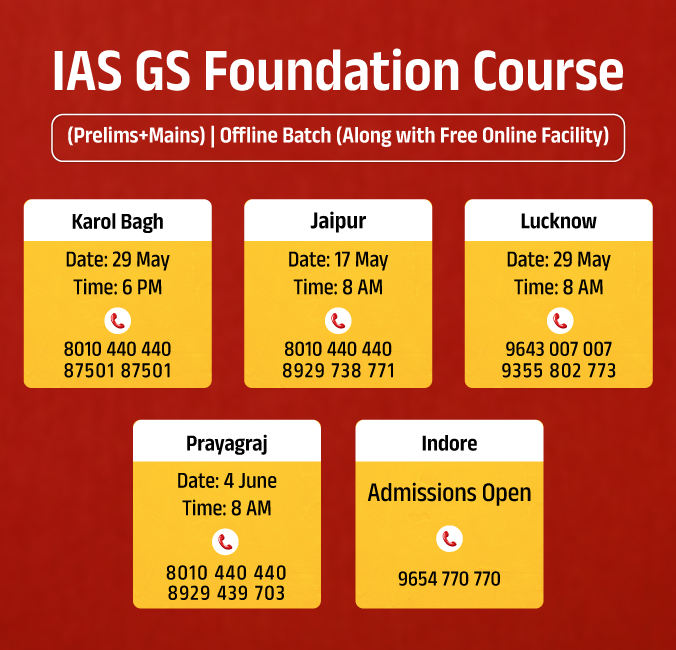
Governance
Regulating Misleading Advertisements in India
For Prelims: Supreme Court of India, Central Consumer Protection Authority, Consumer Protection Act, 2019, Advertisement Standard Council of India
For Mains: Consumer rights and prevention unfair trade practices, Prevention of Misleading Advertisements and Endorsements, Advertising regulations and public health concerns
Why in News?
In a move to safeguard consumers from misleading advertisements, the Supreme Court of India has issued directives for advertisers to submit self-declarations before promoting products in the media.
- In further development, the Union government has withdrawn an AYUSH Ministry letter, which "omitted" Rule 170 of the Drugs and Cosmetics Rules, 1945, with immediate effect.
Note:
- Rule 170 prohibits advertisements of Ayurvedic, Siddha, or Unani drugs without licensing authorities' approval.
What are the Key Directives from the Supreme Court?
- Submission of Self-Declarations:
- Advertisers must submit self-declarations before promoting products in the media.
- Advertisers are now obligated to declare that their advertisements do not deceive or make untrue statements about their products in order to prevent misleading consumers.
- Online Portal for Advertisers:
- Advertisers intending to run TV ads must upload declarations on the 'Broadcast Seva' portal, which serves as a one-stop facility for stakeholders to request permissions, registrations, and licenses for broadcast-related activities from the Ministry of Information and Broadcasting.
- A similar portal for print advertisers is to be established.
- Advertisers intending to run TV ads must upload declarations on the 'Broadcast Seva' portal, which serves as a one-stop facility for stakeholders to request permissions, registrations, and licenses for broadcast-related activities from the Ministry of Information and Broadcasting.
- Responsibility of Endorsers:
- Social media influencers, celebrities, and public figures endorsing products must act responsibly.
- Endorsers should possess adequate knowledge about the products they promote to avoid deceptive advertising.
- Social media influencers, celebrities, and public figures endorsing products must act responsibly.
- Ensuring Consumer Protection:
- Establish a transparent process for consumers to report misleading advertisements and ensure they receive updates on complaint status and outcomes.
What Recent Cases of Misleading Advertisements have Emerged?
- The Advertisement Monitoring Committee at Food Safety and Standards Authority of India (FSSAI) identified 32 cases of misleading claims by food business operators (FBOs) bringing the total count of such violations to 170 in the last six months.
- Variety of Offenders: Violators span diverse product categories, including health supplements, organic products, and staples.
- The Supreme Court recently rebuked Patanjali Ayurved for disseminating misleading advertisements, leading to a ban on its marketing activities.
- The Indian Medical Association accused Patanjali of denigrating allopathic medicine and spreading false information about vaccines during Covid-19.
- The allegations led to legal arguments citing violations of the Drugs & Other Magical Remedies Act, 1954, and the Consumer Protection Act, 2019.
How Do Misleading Advertisements Violate Ethical Principles?
- Violation of Truthfulness: Honesty and truthfulness are essential ethical principles that should guide all business practices, including advertising.
- These advertisements manipulate consumer perceptions and exploit vulnerabilities for commercial gain; they persuade individuals to make purchasing decisions based on false premises.
- Fairness and Justice: Misleading advertisements create an uneven playing field, giving an unfair advantage to companies that engage in deceptive practices over those that prioritize ethical advertising.
- This violates the principle of fairness and justice in the marketplace, as it disadvantages honest competitors and undermines consumer trust.
- Example: Companies making false environmental claims (greenwashing) to capitalize on the growing demand for sustainable products, while their competitors truthfully disclose their environmental impact.
- Consumer Harm: Misleading advertisements can lead to financial losses for consumers who purchase products or services based on false claims, resulting in dissatisfaction.
- It can also harm consumers' physical or mental well-being if the advertised products or services are potentially harmful or ineffective.
- Erosion of Trust: Repeated exposure to misleading advertisements erodes trust in products, brands, and advertising, undermining the ethical principle of integrity in business and society.
- When consumers feel deceived, they lose confidence in the market's integrity, as words and actions become inconsistent.
How Misleading Advertisements are Regulated in India?
- Definition of Misleading Advertisement:
- A misleading advertisement is defined under Section 2 (28) of the Consumer Protection Act, 2019, as any advertisement that:
- Provides a false description of a product or service;
- Offers false guarantees that mislead consumers;
- constitutes an unfair trade practice through express representation;
- Deliberately omits essential information about the product.
- A misleading advertisement is defined under Section 2 (28) of the Consumer Protection Act, 2019, as any advertisement that:
- Central Consumer Protection Authority:
- The Central Consumer Protection Authority (CCPA) operates under the Department of Consumer Affairs.
- Established under section 10 of the Consumer Protection Act, 2019, it regulates matters related to consumer rights violations and unfair trade practices.
- The act empowers the CCPA to prevent false or misleading advertisements and ensure consumer rights are protected.
- Enforcement of Guidelines:
- The CCPA enforces the ‘Guidelines for Prevention of Misleading Advertisements and Endorsements for Misleading Advertisements, 2022’, which were issued per the powers conferred by the Consumer Protection Act, 2019.
- Objective of the Guidelines:
- The guidelines seek to ensure that consumers are not being fooled by unsubstantiated claims, exaggerated promises, misinformation and false claims.
- Such advertisements violate various rights of consumers such as the right to be informed, the right to choose and the right to be safeguarded against potentially unsafe products and services.
- Provisions of the Guidelines:
- The guidelines define "bait advertising", "surrogate advertisement" and "free claim advertisements".
- They also lay down provisions to protect children from exaggerated or unsubstantiated claims in advertisements.
- Advertisements targeting children are prohibited from featuring personalities from sports, music, or cinema for products that require a health warning or cannot be purchased by children.
- Disclaimers in advertisements should not hide material information or attempt to correct misleading claims.
- The guidelines also outline the duties of manufacturers, service providers, advertisers, and advertising agencies to bring more transparency and clarity to advertisements.
- This aims to help consumers make informed decisions based on facts.
- Penalties for Violations:
- CCPA can impose penalties of up to 10 lakh rupees on manufacturers, advertisers, and endorsers for misleading advertisements.
- For subsequent violations, the penalty can be up to 50 lakh rupees.
- CCPA can impose penalties of up to 10 lakh rupees on manufacturers, advertisers, and endorsers for misleading advertisements.
- The Authority can also prohibit the endorser of a misleading advertisement from making any endorsements for up to 1 year, and for subsequent violations, the prohibition can extend up to 3 years.
- Food Safety and Standards Authority of India (FSSAI):
- Deceptive advertising falls under Section-53 of the Food Safety and Standards Act, 2006, making it punishable. FSSAI mandates advertisements to be truthful, unambiguous, and substantiated scientifically.
- FSSAI uses the Food Safety and Standards (Advertisements & Claims) Regulations, 2018 which specifically deal with food (and related products) while CCPA’s regulations cover goods, products and services.
- Legislations Governing Advertising:
- ASCI (Advertisement Standard Council of India):
- It is a nonstatutory tribunal established as a self-regulated mechanism to introduce advertising ethics in India.
- It judges advertisements based on its Code of Advertising Practice, also known as the ASCI code which applies to advertisements seen in India, even if they are from abroad and directed at Indian consumers.
- Consumer Protection Act, 1986:
- Grants consumers the right to be informed about goods and services' quality, quantity, and price.
- Section 2(r) covers false advertisements under the definition of unfair trade practices.
- Provides redressal against misleading advertisements.
- Grants consumers the right to be informed about goods and services' quality, quantity, and price.
- Cable Television Network Act of 1995 and the Cable Television Amendment Act of 2006:
- Prohibits transmission of advertisements that do not conform to the prescribed advertisement code.
- Ensures advertisements do not offend morality, decency, or religious sensitivities.
- Restrictions on Tobacco Advertisement:
- Prohibits direct and indirect advertisement of tobacco products in all forms of media.
- Enforced under the Cigarettes and Other Tobacco Products Act, 2003.
- Drug and Magic Remedies Act, 1954 & Drugs and Cosmetics Act, 1940:
- It regulates drug advertisements. Prohibits the use of test reports for advertising drugs.
- Penalties for violations include fines and imprisonment.
- It regulates drug advertisements. Prohibits the use of test reports for advertising drugs.
- Regulation of Prenatal Diagnostic Techniques:
- Prohibits advertisement related to prenatal sex determination under the Prenatal Diagnostic Techniques (Regulation and Prevention of Misuse) Act, 1994.
- Advertising harmful publications under the Young Persons (Harmful Publications) Act, 1956, is punishable.
- Criminality of Advertisements under the Indian Penal Code (IPC):
- IPC prohibits obscene, defamatory, or inciteful advertisements.
- Offenses related to inciting violence, terrorism, or crime are illegal and punishable under IPC provisions.
- ASCI (Advertisement Standard Council of India):
Initiatives for Consumer Protection
- Consumer Welfare Fund
- Integrated Grievance Address Mechanism (INGRAM) Portal
- Bureau of Indian Standards (BIS)
- Jago Grahak Jago Campaign
- National Consumer Day (24th December)
- Central Consumer Protection Council.
- National and State Consumer Helplines.
|
Drishti Mains Question: Q. Describe the legislative framework governing advertising practices in India. How do these laws and institutions contribute to maintaining ethical standards in advertising? |
UPSC Civil Services Examination Previous Year Question
Prelims
Q.1 With reference to ‘consumers’ rights/privileges under the provisions of law in India, which of the following statements is/are correct ? (2012)
- Consumers are empowered to take samples for food testing.
- When a consumer files a complaint in any consumer forum, no fee is required to be paid.
- In case of death of consumer, his/her legal heir can file a complaint in the consumer forum on his/ her behalf.
Select the correct answer using the codes given below:
(a) 1 only
(b) 2 and 3 only
(c) 1 and 3 only
(d) 1, 2 and 3
Ans: (c)
Mains
Q. What are social networking sites and what security implications do these sites present? (2013)


Governance
Shaping the Future of India’s Toy Industry
For Prelims: India’s Toy Industry, Global Trade Research Initiative Report, International Standards Organization (ISO), Bureau of Indian Standards (BIS)
For Mains: Strategy for India’s Toy Industry
Why in News?
Recently, the Global Trade Research Initiative report has proposed a comprehensive strategy to develop India's toy industry and enhance exports.
- The objective is to elevate India into a global hub for toy manufacturing and export by implementing strategic interventions focused on improving quality, fostering innovation, and expanding market reach.
What is the Status and Potential of India’s Toy Industry?
- Status:
- As per Global Trade Research Initiative report India holds a marginal position in the global toy trade, with a mere 0.3% share in exports and 0.1% share in imports.
- India ranks 27th in global toy exports, with a share of only 0.3%, and 61st in toy imports, with imports totalling USD 60 million.
- India exports a significant amount of electronic toys compared to other categories, while also making a significant contribution to the toy trade through the export of plastic dolls, metal, and other non-electronic toys, highlighting its diverse manufacturing capabilities.
- Potential:
- The Indian toy industry is among the fastest-growing globally, projected to reach USD 3 billion by 2028, growing at a CAGR of 12% between 2022-28.
- The Indian toy industry is expanding its global presence, with increased high-value exports to Middle East and African countries.
Global Toy Industry:
- As per Global Trade Research Initiative report In 2022, the global toy market witnessed imports valued at approximately USD 60.3 billion with China dominating this market with exports worth USD 48.3 billion, representing 80% of global exports.
- The USA leads as the largest importer of toys,while other major importers include the European Union, Japan, Canada, Australia, Mexico, and South Korea signifying a diverse market.
What are the Challenges Faced by India’s Toys Industry?
- Lack of Technology: It hinders the Indian toy industry by causing most domestic manufacturers to use outdated technology and machinery, impacting the quality and design of the toys.
- High GST rates: Mechanical toys attract 12% GST while tax on electronic toys is 18%. A mere addition of a bulb or a sound mechanism changes the classification of the toy.
- Lack of Infrastructure: The toy industry in India faces challenges due to poor infrastructure, lack of end-to-end manufacturing facilities, inadequate testing labs, toy parks, clusters, and logistics support.
- Unorganized and Fragmented: The Indian Toy Industry is still significantly fragmented, with 90% of the market being unorganized, and harnessing the maximum benefit becomes very difficult.
- Other Challenges: Factors such as cost-effectiveness, product diversity, quality standards, and trade agreements play pivotal roles in shaping the global toy trade landscape.
- Shifts in consumer preferences, technological advancements, and regulatory changes also impact market dynamics.
GoI Measures to Promote the Local Toy Industry
- Import Duty Increase: India significantly raised import duties on toys, increasing the basic customs duty from 20% to 70% in July 2021.
- This made imported toys much more expensive, giving locally produced toys a competitive advantage.
- Quality Control Order (QCO): Since January 2021, the QCO has required all toys sold in India to meet specific Indian safety standards, covering aspects like sharp edges, small parts hazards, flammability, and harmful chemical migration.
- Toys must also have the BIS certification mark and undergo random checks and testing in NABL-accredited laboratories.
- The QCO checked substandard imports from China but did not result in higher exports from India.
- National Action Plan for Toys: An initiative by the Government of India, it involves collaboration among 15 ministries and includes measures such as creating toy production clusters, introducing schemes to encourage manufacturing and exports, enhancing research and development, ensuring quality standards, integrating toys with education, and organizing toy fairs and exhibitions.
Note:
- Toy quality is determined by meeting performance standards, which can be voluntary or mandatory.
- The Quality Control Order 2020 is a mandatory technical regulation in India.
- Internationally, standards are set by the International Standards Organization (ISO), while in India, the Bureau of Indian Standards (BIS) sets specific standards for toys, covering aspects like mechanical safety, flammability, and element migration.
Way Forward
- Government initiatives: Support the toy industry through schemes like SFURTI (Scheme of Funds for the Regeneration of Traditional Industries) by the Ministry of MSME and promote exports that could further boost India's presence in the global toy market.
- Encourage Global Toy Brands to Manufacture in India: Invite international toy manufacturers who currently operate in China, such as Hasbro, Mattel, Lego, Spin Master, and MGA Entertainment, to consider setting up production facilities in India. .
- Collaboration with international partners for technology transfer and skill development can enhance India's competitiveness in the global toy trade.
- Learn from China: The Indian toy industry has an estimated value of USD 3 billion in contrast to USD 100 billion in China.
- India should study China's success in becoming a major exporter to demanding markets like the USA, EU, Japan, and the rest of the world, despite initially supplying low-standard and unsafe toys.
- Localize Production of Key Inputs: To enhance self-sufficiency and reduce costs, promote local manufacturing of essential toy-making materials like glass eyes, beads, imitation stones, plastics, electric motors, and remote control devices, reducing dependency on imports.
|
Drishti Mains Question: Q. Discuss the challenges faced by the Indian toys industry and evaluate potential strategies to address them. How can the Indian government and industry stakeholders collaborate to promote the growth and competitiveness of the domestic toys sector? |
UPSC Civil Services Examination, Previous Year Question (PYQ)
Prelims:
Q. What is/are the recent policy initiative(s) of Government of India to promote the growth of manufacturing sector? (2012)
1. Setting up of National Investment and Manufacturing Zones
2. Providing the benefit of ‘single window clearance’
3. Establishing the Technology Acquisition and Development Fund
Select the correct answer using the codes given below:
(a) 1 only
(b) 2 and 3 only
(c) 1 and 3 only
(d) 1, 2 and 3
Ans: (d)
Mains:
Q. “Success of ‘Make in India’ program depends on the success of ‘Skill India’ programme and radical labour reforms.” Discuss with logical arguments. (2015)

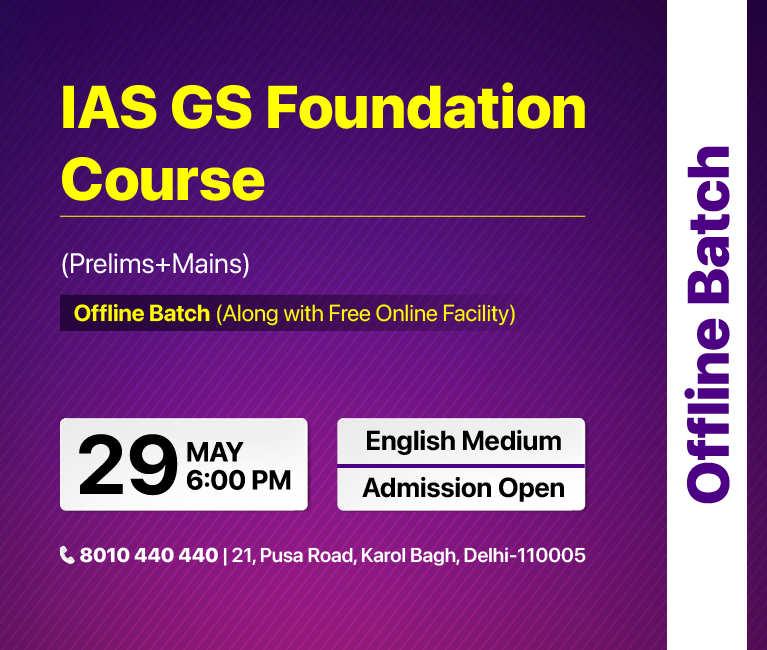
Important Facts For Prelims
Aurora Borealis in India
Why in News?
Recently, Auroras which are typically visible in high-latitude regions such as the North and South Poles, were observed worldwide, including in areas where they are uncommon.
- In India, they were observed through all-sky cameras positioned around the Indian Astronomical Observatory (IAO) in Hanle, Ladakh.
What is the Aurora Phenomenon?
- About:
- Auroras are bright and colourful lights, formed due to an active interaction in Space between charged solar winds and the Earth’s magnetosphere.
- They occur when violent solar events eject charged particles into space, which become trapped in Earth's magnetic field and interact with atmospheric atoms, ultimately resulting in geomagnetic storms and the creation of aurora.
- The constantly changing inputs from the sun, the varying responses from the Earth's upper atmosphere, and the motion of the planet and particles in near-Earth space all work together to create different auroral motions and shapes.
- In the Northern Hemisphere, the phenomenon is called the northern lights (aurora borealis), while in the Southern Hemisphere, it's called the southern lights (aurora australis).
- Composition and Colors:
- Auroras consist of gases and particles, including oxygen and nitrogen.
- The collisions of these particles with the atmosphere release energy in the form of light.
- The colors observed in auroras depend on the type of gas and altitude of the collisions.
- Impact:
- They can trigger blackouts on the Earth, knock out satellites in space, endanger the lives of astronauts, and affect space weather throughout the Solar System.
Note: STEVE is an aurora-like phenomenon that appears as a distinct, purple-colored arc with a moving green "picket-fence" structure. It can be observed from lower latitudes than the typical northern and southern lights.
Geomagnetic Storm
- A geomagnetic storm is a major disturbance of Earth's magnetosphere that occurs when there is a very efficient exchange of energy from the solar wind into the space environment surrounding Earth.
- Violent geomagnetic storms are rare, occurring around once every few decades.
- The last time charged particles from the Sun blew into the Earth with similar energy and intensity was in 2003.
UPSC Civil Services Examination, Previous Year Questions (PYQs)
Prelims
Q. Consider the following statements: (2018)
1. The Earth’s magnetic field has reversed every few hundred thousand years.
2. When the Earth was created more than 4000 million years ago, there was 54% oxygen and no carbon dioxide.
3. When living organisms originated, they modified the early atmosphere of the Earth.
Which of the statements given above is/are correct?
(a) 1 only
(b) 2 and 3 only
(c) 1 and 3 only
(d) 1, 2 and 3
Ans: (c)
Q. Electrically charged particles from space travelling at speeds of several hundred km/sec can severely harm living beings if they reach the surface of the Earth. What prevents them from reaching the surface of the Earth? (2012)
(a) The Earth's magnetic field diverts them towards its poles
(b) Ozone layer around the Earth reflects them back to outer space.
(c) Moisture in the upper layers of atmosphere prevents them from reaching the surface of the Earth
(d) None of the statements (a), (b) and (c) given above is correct
Ans: (a)


Important Facts For Prelims
Snow Leopards
Why in News?
Recently there was a significant discovery of snow leopards in the Kishtwar High Altitude National Park of Jammu and Kashmir's Chenab Valley region by a team of scientists.
- This discovery holds importance for snow leopard conservation in India, shedding light on a lesser-known population of this apex predator.
Why is the Sighting Significant?
- Importance of the Discovery:
- Snow leopards are highlighted as an apex predator and a flagship species of High Mountain Asia.
- India's role as home to 2% of the global snow leopard range emphasizes the importance of conservation efforts.
- The occupancy and abundance of the snow leopard is poorly known across its range in India.
- India is home to 718 snow leopards, most of whom live in areas that are not under legal protection.
- Population surveys in the Western Himalayas have been limited to Ladakh, Himachal Pradesh and Uttarakhand.
- Findings:
- Snow leopards were found at altitudes ranging from 3,004 to 3,878 meters.
- This is mostly an arid alpine region above the treeline, with steep and rugged terrain flanked by high-altitude pastures of junipers, grasses, and legumes on rolling hills.
- Anthropogenic pressure, particularly from livestock grazing, was observed in certain catchments, posing threats to habitat and prey availability.
- This could lead to human-wildlife conflict and drive the snow leopard and its prey into suboptimal areas, thus exposing them to other threats.
- Snow leopards were found at altitudes ranging from 3,004 to 3,878 meters.
What are the Characteristics of Snow Leopard?
- Some Key Facts:
- Physical Features
- Height: 55-65 cm (22 – 26 inches)
- Length: 90 – 115 cm (36 – 44 inches)
- Its extra large paws act like a pair of natural snow shoes preventing the cat from sinking into the snow.
- Its round, short ears reduce heat loss, and the wide, short nasal cavity warms the air before it reaches the cat’s lungs.
- The cat has strong, short front limbs and longer hind limbs helping launch the cat up to 30 feet (10 meters) in one leap.
- Its extra long tail helps the cat keep its balance and provides extra warmth when it’s wrapped around the body.
- Unlike other big cats, snow leopards can't roar.
- Despite being called the snow 'leopard', this big cat is more closely related to the tiger than the leopard.
- Physical Features
UPSC Civil Services Examination, Previous Year Questions (PYQs)
Prelims
Q. Which one of the following National Parks lies completely in the temperate alpine zone? (2019)
(a) Manas National Park
(b) Namdapha National Park
(c) Neora Valley National Park
(d) Valley of Flowers National Park
Ans: (d)


Important Facts For Prelims
Shrimp Farming in India
Why in News?
Recently, India refuted the allegations made by a US based Human Rights Group of abusive conditions at shrimp farms in India. India stated that entire India’s shrimp exports are certified by the Marine Products Export Development Authority(MPEDA) and there is no scope for such concerns.
What is the State of Shrimp Farming in India?
- About: A shrimp is a crustacean (a form of shellfish) characterised by a semi transparent body flattened from side to side and a flexible abdomen terminating in a fanlike tail.
- Their close relatives include crabs, crayfish, and lobsters. They occur in all oceans, in shallow and deep water, and in freshwater lakes and streams.
- Shrimp Farming: Shrimp Farming is about raising shrimp in controlled environments such as ponds, tanks, or raceways for human consumption.
- They prefer warm water, with temperatures between 25-30°C (77-86°F).
- Preferred soil textures are clay-loam or sandy-clay loam, slightly alkaline soil with pH between 6.5 and 8.5 is optimal.
- A minimum of 5% calcium carbonate in the soil is beneficial for shrimp farming.
- Status of Shrimp Farming in India:
- India as Shrimp Exporter: India is one of the world’s largest shrimp exporters.
- In 2022-23, India’s seafood exports stood at USD 8.09 billion or ₹64,000 crore and shrimps accounted for a bulk of these exports at USD 5.6 billion.
- India’s share of seafood exports in the U.S. market was 40% in 2022-23, far ahead of rivals like Thailand, China, Vietnam and Ecuador.
- Shrimp Producing States: Andhra Pradesh is the largest shrimp producer state in India which accounts for 70% of India’s shrimp output.
- West Bengal and Gujarat are other major players in shrimp farming, with Sundarbans in West Bengal and Kutch in Gujarat being a key producer.
- Regulation:
- All shrimp units are registered with MPEDA (Marine Products Export Development Authority) and FSSAI (Food Safety and Standards Authority of India).
- They follow a HACCP (Hazard Analysis and Critical Control Point) based food safety management system as per the US Code of Federal Regulations.
- Usage of pharmacologically active substances in aquaculture has been banned since 2002.
- Also, National regulations and monitoring measures like the National Residue Control Plan, ELISA screening labs, in-house labs, and pre-export checks are in place.
- India as Shrimp Exporter: India is one of the world’s largest shrimp exporters.
What is the Marine Products Export Development Authority?
- About: It is a nodal agency for the holistic development of the seafood industry in India and the realisation of its export potential.
- It was established in 1972 under Marine Products Export Development Authority Act (MPEDA), 1972.
- It functions under the Union Ministry of Commerce and Industry.
- Objectives: It envisages the development of seafood production, processing, marketing, and exports in India.
- The Government of India recommends new standards for fishing vessels, storage premises, processing plants, and conveyances based on the recommendations of MPEDA.
- Functioning: The MPEDA enrols exporters, lays down quality standards, liaisons with importers to boost exports and conducts capacity-building programmes like training, awareness campaigns for relevant stakeholders to increase production and productivity.
- Headquarters: in Kochi, Kerala.
What are the Government Initiatives Related to Seafood Exports?
- Pradhan Mantri Matsya Sampada Yojana (PMMSY): It was launched in 2020 for providing support in quality shrimp production, species diversification, promotion of export-oriented species, branding, standards and certification, training and capacity building, creation of post harvest infrastructure through this flagship scheme.
- Fisheries and Aquaculture Infrastructure Development Fund: Launched in 2018, FIDF provides loans to address infrastructure and modernization needs in both marine and inland fisheries.
- Kisan Credit Card (KCC) Fisheries scheme: It provides adequate and timely credit support to fisheries farmers for their working capital requirements.
- New cardholders can obtain credit up to Rs. 2 lakhs with interest subvention.
- Existing KCC holders can access an increased credit limit of Rs. 3 lakhs.
- The lending rate for KCC loans is 7%, including 2% interest subvention per annum by the Government of India.
UPSC Civil Services Examination Previous Year Question (PYQ)
Prelims:
Q. Under the Kisan Credit Card scheme, short-term credit support is given to farmers for which of the following purposes? (2020)
- Working capital for maintenance of farm assets
- Purchase of combine harvesters, tractors and mini trucks
- Consumption requirements of farm households
- Post-harvest expenses
- Construction of family house and setting up of village cold storage facility
Select the correct answer using the code given below:
(a) 1, 2 and 5 only
(b) 1, 3 and 4 only
(c) 2, 3, 4 and 5 only
(d) 1, 2, 3, 4 and 5
Ans: (b)
Mains:
Q. Defining the blue revolution, explain the problems and strategies for pisciculture development in India. (2018)


Rapid Fire
UN Body Defers NHRC Accreditation
The Global Alliance of National Human Rights Institutions (GANHRI), which is based in Geneva and affiliated with the United Nations (UN), has postponed granting accreditation to the National Human Rights Commission of India (NHRC) for the second consecutive year.
- The decision could impact India's voting rights at the Human Rights Council and certain UNGA bodies.
- GANHRI gives A-status to institutions that meet certain criteria for independence and effectiveness in protecting human rights.
- The NHRC has been accredited ‘A’ Status since the beginning of the accreditation process for NHRIs in 1999, which it retained in 2006, 2011 and in 2017 also after the deferment.
- However, in 2023 and 2024, India's NHRC had its A-status suspended for two consecutive years.
- The NHRC has been accredited ‘A’ Status since the beginning of the accreditation process for NHRIs in 1999, which it retained in 2006, 2011 and in 2017 also after the deferment.
- The GANHRI latest report is still awaited. However, its previous report (2023 report) had cited a number of reasons for recommending the deferral. These included:
- Composition: Lack of transparency in appointing members to the NHRC,
- Appointment of police officers to oversee human rights investigations
- Lack of gender and minority representation on the member panel.
- NHRC has also failed to create conditions required to be “able to operate independent of government interference”.


Rapid Fire
UNESCO's Memory of the World Asia-Pacific Regional Register
Recently, the Ramcharitmanas, Panchatantra, and Sahṛdayāloka-Locana have been included in ‘UNESCO's Memory of the World Asia-Pacific Regional Register’.
- ‘Sahṛdayaloka-Locana’, ‘Panchatantra’, and ‘Ramcharitmanas’ were authored by Acharya Anandvardhan, Pt. Vishnu Sharma, and Goswami Tulsidas, respectively.
- The Indira Gandhi National Centre for the Arts (IGNCA) played a vital role in securing the historic moment during the 10th meeting of the Memory of the World Committee for Asia and the Pacific (MOWCAP).
- This marks the first time IGNCA has submitted nominations to the Regional Register since its inception in 2008.
- The Memory of the World (MoW) Program is a global initiative launched by UNESCO in 1992 to safeguard important documentary heritage.
- In the Asia Pacific region, a specific branch called the Memory of the World Committee for Asia and the Pacific (MOWCAP) was established in 1998.
- MOWCAP covers 43 countries, representing one of UNESCO's five regional programs.


Rapid Fire
UNGA Resolution for Palestine's UN Membership Bid
The United Nations General Assembly (UNGA) voted in favour of the resolution granting new "rights and privileges" to Palestine and called on the Security Council to reconsider its request to become the 194th member of the United Nations.
- The resolution "determines" that the state of Palestine is qualified for membership and recommends the Security Council reconsider its request "favourably."
- The resolution grants Palestine the right to speak on all issues, propose agenda items, and participate in UN and international conferences, but explicitly states that Palestine does not have the right to vote in the General Assembly.
- India voted in favour of the UN resolution recommending Palestine for full UN membership.
- Despite opposition from the US, the resolution received 143 votes in favour, signalling a global push for Palestine's status upgrade within the UN.
- Palestinian first delivered the application for UN membership in 2011, which failed to garner the required support in the Security Council.
- Subsequently, the General Assembly upgraded Palestine's status to a non-member observer state in 2012, allowing participation in international organisations like the International Criminal Court.
- The renewed push for full Palestinian membership in the UN comes as the war in Gaza has put the more than 75-year-old Israeli-Palestinian conflict at centre stage.


Rapid Fire
SBI Becomes First TCM Member at IIBX
State Bank of India (SBI) announced that it has become the first bank to become a Trading cum Clearing (TCM) Member at India International Bullion Exchange (IIBX).
- It enables SBI’s IFSC Banking Unit (IBU) to trade on the IIBX platform as the RBI allowed IBUs to act as trading members and clearing members at IIBX as Special Category Clients (SCCs) for importing gold through the bullion exchange.
- This move is expected to increase trading volumes for gold and silver at the IIBX, bringing transparency and efficiency to India's Bullion Market.
- IIBX regulated by the International Financial Services Centers Authority (IFSCA) is India's first bullion exchange established in GIFT -City IFSC.
- A bullion market is where traders trade in precious metals like gold and silver, with exchanges taking place directly between buyers and sellers and in the futures market (auction market).
- The versatile uses of silver and gold, especially in industrial applications, influence their prices. Bullions are considered a safe bet against inflation and a haven for investment.
- A bullion market is where traders trade in precious metals like gold and silver, with exchanges taking place directly between buyers and sellers and in the futures market (auction market).
- TCM is a member who can trade on their own account and on behalf of their clients, and also clear and settle trades executed by themselves and other trading members who opt to use their clearing services.
Rapid Fire
Silk Cotton Tree Under Threat
Silk Cotton trees (Bombax ceiba L.) are under threat in Rajasthan due to overuse in tribal religious traditions, particularly in Holika-dahan rituals.
- It is also called Semal, or the Indian Kapok tree, or Shalmali in Sanskrit.
- Tribals see the act of burning as a virtuous ritual by mythological Holika and Prahlad.
- In 2009, around 1,500-2,000 trees were cut, debarked, and ignited during Holi in the Udaipur district in that year.
- It is mainly found in moist deciduous and semi-evergreen forests, also in the plains.
- In India, this species is commonly found in Andaman & Nicobar Island, Assam, Bihar, Kerala, Madhya Pradesh, Maharashtra, Odisha, Punjab, Rajasthan, and Uttar Pradesh.
- This tree is of high medicinal value; its roots and flowers are used for their stimulating, astringent and hemostatic properties, as an aphrodisiac, to stop diarrhoea, strengthen the heart, induce vomiting, soothe inflammation, treat dysentery, and lower fever.
- It also has antibacterial and antiviral properties, provides pain relief, protects the liver, acts as antioxidants, and lowers blood sugar levels.
- It is also used in agroforestry for livestock feed. The wood is strong, elastic and durable for ship building.
- The Kathodi tribe of Rajasthan uses wood for musical instruments such as the Dholak and Tambura and the Bhils use it to make kitchen spoons.



